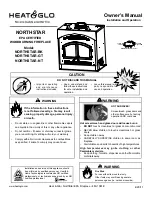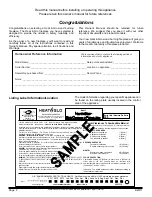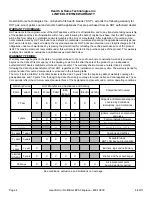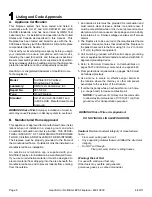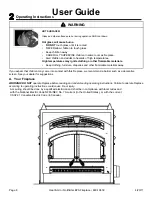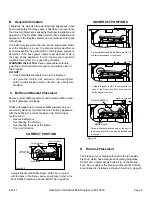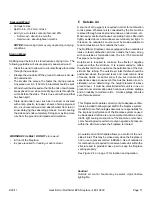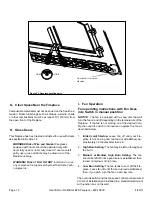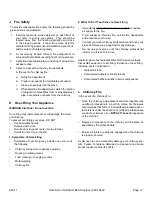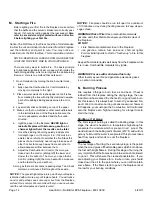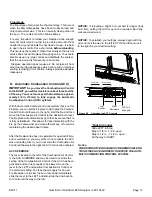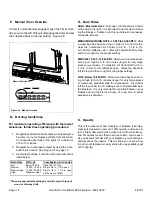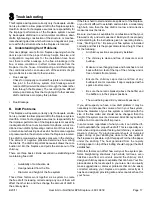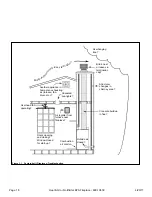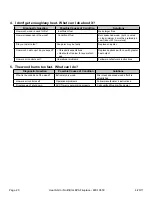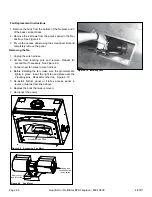
4/20/11
Heat & Glo • NorthStar EPA Fireplace • 480-1081E
Page 11
Seasoned Wood
• Cut logs to size
• Split to 6 in. (152 mm) or less
• Air dry to a moisture content of around 20%
- Soft wood - about nine months
- Hard wood - about eighteen months
NOTICE: Seasoning time may vary depending on drying
conditions.
WARNING! Fire Risk! DO NOT store wood:
• In front of the fireplace.
• In space required for loading or ash removal.
Storing Wood
Splitting wood before it is stored reduces drying time. The
following guideline will ensure properly seasoned wood:
• Stack the wood to allow air to circulate freely around and
through the woodpile.
• Elevate the woodpile off the ground to allow air circula-
tion underneath.
• The smaller the pieces, the faster the drying process.
Any piece over 6 in. (152 mm in diameter should be split.
• Wood should be stacked so that both ends of each piece
are exposed to air, since more drying occurs through the
cut ends than the sides. This is true even with wood that
has been split.
• Store wood under cover, such as in a shed, or covered
with a tarp, plastic, tar paper, sheets of scrap plywood,
etc., as uncovered wood can absorb water from rain or
snow, delaying the seasoning process. Avoid covering
the sides and ends completely. Doing so may trap mois-
ture from the ground and impede air circulation.
A source of air (oxygen) is required in order for combustion
to take place. Whatever air is consumed by the fire must be
replaced through cracks around windows, under doors, etc.
Most newly constructed houses or existing homes fitted with
tightly sealed doors and windows are relatively air tight. In
this case, an outside air source must be made available to
feed combustion air from outside the home.
The NorthStar Fireplace comes equipped with an outside air
intake to feed combustion air from outside the home, along
with an outside air termination cap. The 6 in. (152 mm) solid/
flex pipe is not supplied.
Outside air is required to minimize the effects of negative
pressure within the structure. It is recommended to utilize
the shortest duct run to optimize the performance of the Out-
side Air flex tubing. The outside air inlet thimble should be
positioned above the ground level, and must remain clear
of leaves, debris, ice and/or snow. If you live in an area that
experiences deep snow levels, this must be taken into con-
sideration when determining the height placement above
ground level. It must be unrestricted while unit is in use to
prevent room air starvation which can cause smoke spillage
and an inability to maintain a fire. Smoke spillage can also
set off smoke alarms.
F. Outside Air
This fireplace will operate correctly only if adequate ventila-
tion is provided to allow proper draft to the fireplace system.
Hearth & Home Technologies assumes no responsibility for
the improper performance of the fireplace system caused
by inadequate draft due to environmental conditions, down
drafts, tight sealing construction of the structure, or mechani-
cal exhausting devices which create a negative air pressure
within the structure where the fireplace is located.
An outside air control handle allows you control of the out-
side air inlet. This may be closed only when the fireplace is
not in use to prevent cold air infiltration. Use of outside air
for combustion is required to conserve heated air within the
structure and to provide make up air to keep the fireplace
venting properly.
See Figure 2.4 on page 12 for location and operation.
Outside air control handle may be warm. Adjust before
lighting fire.
Caution!

